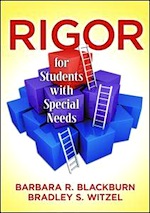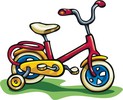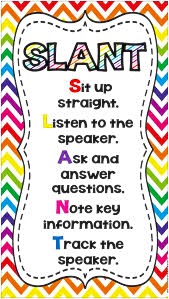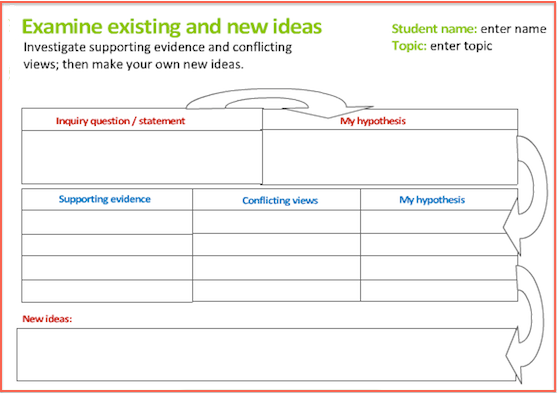Supporting Rigor for Students with Special Needs
 by Barbara R. Blackburn & Bradley Witzel
by Barbara R. Blackburn & Bradley Witzel
Students who are labeled “learning disabled” or “at-risk” are not incapable of learning or responding to high expectations. Far from it, in fact.
Most students with learning disabilities have average to above average intelligence. Their success in school is not hindered by a lack of ability, but their achievement may be limited if teachers fail to select the appropriate teaching strategies and motivational tools to challenge them appropriately.

Teachers create the rigor
Rigor is not about what standards say, but what teachers do.
The Common Core State Standards address what students should know and be able to do but not how to teach specific standards. It’s left up to teachers to pair instructional rigor with the Common Core curriculum.
In her book, Rigor is Not a Four Letter Word, Barbara addresses this issue of rigor, which she defines as “creating an environment in which…
- each student is expected to learn at high levels,
- each student is supported so he or she can learn at high levels, and
- each student demonstrates learning at high levels.

Scaffold rigor with effective strategies
One critical thread in this fabric of success is support. In an era of increased rigor, we must provide the necessary levels of scaffolding across the student spectrum, including for our students with special needs.
Let’s look at three specific strategies to help students learn: gradual release, modeling, and graphic organizers.
Gradual Release: The Bicycle Model
Barbara recalls: When I was a young girl, I wanted to ride a bike. However, I had to start with a tricycle. I needed to be close to the ground, and I needed the support of extra wheels.

Dad still held on to the back of the seat, to make sure I learned how to keep my balance without the extra wheels. When he was sure I was ready, he let go and I began to ride by myself — one of the proudest days of my young life.
That’s one way to think of scaffolding. At the beginning of a new concept, students may need strong, consistent support so they don’t falter. Then we lessen the support a bit, but still ensure that we’ve built in the scaffolding strategies. Next we pull back a bit, but still stay close by to make sure they are successful. When they’re ready we let them try it by themselves and show they understand the concept and can do the work without the extra help.
Consider this three-step process: “I do it, we do it, you do it.” First, you complete the task, process, or assignment as a model for the students. Second, you and the students work together through the process. After students are successful, then they try it independently. That’s the gradual release model.
Modeling for Students
Not every student comes to school ready to learn. This is not merely a kindergarten concern; it expands across the grade levels. Students need models that show them what they need to do and why they are doing it.

There are key ways you can model for your students. First, you can model expected instructional behaviors. For example, if your students are not paying attention, you can teach your students the SLANT model. By following the SLANT model, students learn how to appear like they are paying attention, and, ultimately may improve their actual academic engagement.
You can also model expected assignments. For example, if students are expected to write a paragraph or an extended response, it’s critical that they see samples of what you expect. We’ve found that showing two or three samples, highlighting what is “good work,” helps students more effectively complete the assignment.
Graphic Organizers
It is also crucial for students to develop mental images to better organize what they have learned. Using visuals in class is important in helping students create mental images, which makes replication and application of new material more effective. With math word problems, graphic organizers are frequently used to help students identify variables, understand the question, figure out what is missing from the problem, and then solve the problem.
In literacy, different types of graphic organizers are used to help with reading and writing both narrative and expository text. A quick search of Google Images produces a large variety of organizers that may meet a particular need. Here’s an example:
One way graphic organizers can be used is to make meaning of text. When reading a complex article, a teacher can help students extract facts from expository text with the use of a graphic organizer. The example below (upper middle grades) supports the CCSS in terms of taking a proposition from text, citing supporting evidence and then examining its validity. [Free source: Exploratree; hat tip to Larry Ferlazzo.]
Students with disabilities can meet high standards
Providing appropriate support and scaffolding is a crucial part of helping students learn at more rigorous levels. In order to help our students with learning disabilities to rise to the level of the Common Core, we must be sure our instructional practice provides appropriate support.
The use of practical, research-based strategies to accomplish higher achievement is a key to helping students be successful.
Barbara Blackburn is co-author with Bradley Witzel of Rigor for Students with Special Needs (Routledge, 2013) and other books about instructional rigor.
Bradley Witzel is Associate Professor and Special Education Program Coordinator at Winthrop University. Dr. Witzel has written several research and practitioner articles, and co-authored several books on mathematics education and interventions, including Response to Intervention in Math (Corwin, 2010). He served as a reviewer of the final report from the National Math Advisory Panel.



































